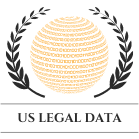In the Catonsville District Court of Baltimore County, a personal injury case unfolded that highlighted the increasing significance of data-driven decision-making in legal proceedings.
The plaintiff, a female in her late forties, found herself in a troubling situation. She was rear ended at the intersection of Franklin/Mulberry Street and N. Greene Street in Baltimore. The accident, instigated by a young male driver (the defendant) with a notorious history of fleeing accident scenes, unfolded in a similarly troubling manner: he promptly fled the scene after colliding with her vehicle.
Staying calm amid the mayhem, the Plaintiff swiftly found a law enforcer close by to tell what had happened. She had cleverly taken a snapshot of the accused’s license plate, which ended up essential as the officer exploited this pivotal bit of proof to effectively follow the vehicle back to its proprietor.
The accident resulted in moderate damage to her vehicle and personal injuries, including spasms, sprains, strains, and headaches. She went through a normal course of physical therapy to remedy her injuries. But when she submitted her demand to the insurer for the owner of the vehicle, State Farm, it was denied! They said that their insured wasn’t involved in any incident in Baltimore that day.
The Plaintiff immediately filed suit against the owner of the vehicle, the alleged driver, and she even brough in her own insurance company for uninsured motorist coverage to safeguard against the possibility that the accident was caused by a phantom vehicle.
At trial, the defendant driver’s credibility suffered a significant blow when his past driving record, marked by similar incidents, was exposed. This revelation in front of the judge played a crucial role in the proceedings. The case underwent bifurcation, a process where the trial is divided into two distinct phases. The first phase focused on the issue of liability, determining who was at fault for the accident. The second phase was dedicated to assessing damages, evaluating the monetary value of the plaintiff’s claim. This separation allowed for a clearer and more focused examination of each critical aspect of the case.
Contrary to the defendant’s assertions of non-involvement, the judge determined that he was solely responsible for the accident, having rear-ended the plaintiff’s vehicle. Acknowledging that the case now had merit and that they were on the hook, the defense offered to settle by covering the plaintiff’s medical expenses, which amounted to $7,236. Their reasoning was as follows: This was a minimal to moderate type of impact accident with attorney referred medical treatment and a plaintiff that had a significant claim history for bodily injury (five to six others). As such, in their view, additional money for pain and suffering was unwarranted in this case.
The judge, after considering all aspects of the case, delivered a verdict that closely mirrored the machine learning model’s prediction. The plaintiff was awarded $10,447, a sum that not only covered her medical expenses but also acknowledged her non-economic suffering.
To understand the financial impact of following the machine learning model’s prediction, let’s break down the numbers. The defense offered to cover the plaintiff’s medical bills, which totaled $7,236. However, the judgment amount, as predicted by the model, was $10,447. The difference between these two amounts represents the additional value gained by pursuing the trial based on the model’s recommendation.
Here’s the calculation:
– Judgment Amount: $10,447
– Defense Offer: $7,236
– Difference: $10,447 – $7,236 = $3,211
This $3,211 is the extra amount gained by following the model’s advice. Now, considering the legal fee of one-third (or approximately 33.3%), we can calculate the additional earnings for both the plaintiff and her lawyer.
- Additional Earnings: $3,211
- Lawyer’s Fee (1/3 of $3,211): $3,211 * 1/3 ≈ $1,070.33
- Additional Amount to Plaintiff: $3,211 – $1,070.33 ≈ $2,140.67
By utilizing the machine learning model, a few clicks of a button provided the legal team with a data-driven prediction. This insight led to the decision to reject the initial offer and proceed with the trial, ultimately resulting in an additional $2,140.67 for the plaintiff and around $1,070.33 in legal fees. This scenario exemplifies how technology, specifically machine learning, can be a powerful asset in legal decision-making, potentially leading to significantly better financial outcomes with minimal additional effort.
The growing use of machine learning in the legal field is set to have a profound impact, particularly due to the substantial financial benefits it offers. In cases where the defense proposes a $50,000 settlement but a data-driven model forecasts a $100,000 award, adhering to the model’s prediction can result in significantly higher settlements or judgments. This not only benefits plaintiffs but also ensures greater financial returns for their lawyers. For personal injury attorneys dealing with larger cases, the advantages of leveraging such technology are even more pronounced.
This shift towards embracing technology in legal strategy not only enhances the accuracy of case assessments but also opens up new avenues for maximizing client benefits and firm profitability. As more legal professionals recognize and harness the power of these tools, the landscape of personal injury law is poised for a transformative and progressive change.
